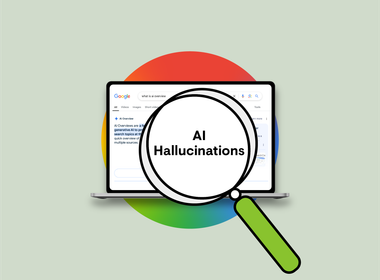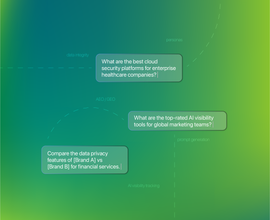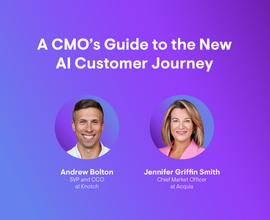What are AI Hallucinations and How do I Minimize them?
AI can generate any kind of content you need, at speed, offering brand new levels of efficiency. But this incredible capability comes with a critical risk: What happens when the AI confidently makes things up? That’s called an AI hallucination, and it happens more often than you might think.
Especially since many AI models and LLMs are designed with specific knowledge cutoffs that limit the data and insights they have access to when creating content. If you’re not careful, AI hallucinations can reduce your content quality and put your brand’s authority and visibility at risk.
What are AI Hallucinations and How do I Minimize them?
An AI hallucination occurs when an AI model generates output that includes false, outdated, or inaccurate information while presenting it as if it’s fact. It's not a bug in the traditional sense, but a byproduct of how LLMs work.
These models are designed to predict the next most probable word in a sequence to form sentences, but they don't possess true understanding or the ability to think. When a model lacks sufficient or clear data on a topic, it may "fill in the gaps" by generating responses that sound plausible but are actually entirely made up.
This presents a significant risk for brands, as publishing content with hallucinations can damage your brand’s reputation in the eyes of answer engines and your audience. Imagine an AI generating an article that incorrectly states your product's features, cites a non-existent study to support a claim, or even misrepresents your company's history.
Depending on the information included, this could mislead your customers, damage your credibility, or even create a compliance or PR concern, depending on the severity of the hallucinations. In an era where authenticity and trust are valued by audiences more than ever, preventing AI hallucinations is a non-negotiable part of any responsible AI content strategy.
How to minimize AI hallucinations in generated content
There’s no way to guarantee that your AI output won’t have hallucinations. However, you can reduce the chances of hallucinations by ensuring that you have a human in the loop throughout the AI content creation process and providing enough detailed context within your prompt to guide the AI toward the desired output.
The most important thing is the prompt. [To have success], everyone has to get really good at prompt engineering and understand that the output you get from a basic prompt is likely going to be garbage because there’s no context in it. A good prompt might be pages long with specific data points and your own POV. You have to give the [necessary] context or else the model will hallucinate.
In short, your goal is to shift the AI from being a pure "creator" to a "summarizer" or "synthesizer" of known, reliable information.Actionable strategies to minimize AI hallucinations include:
- Provide specific material to work from: Rather than asking "Write a blog post about our new feature," provide the press release and technical documentation and ask it to "Write a blog post based on the following documents."
- Be specific and detailed in your prompt: Provide context around the goal of the project, from who the target audience is, to notes on your brand’s voice and tone, to products and features to highlight, and even considerations like length and keyword usage.
- Fact-check and edit: This one is a non-negotiable for any responsible AI strategy. Always treat AI-generated content as a first draft. Have a human subject matter expert review, edit, and fact-check every piece of content before it is published.
- Leverage Retrieval-Augmented Generation (RAG): This is the most powerful technical solution. RAG connects the AI to a live, authoritative source of information. This forces the AI to base its answers on retrieved facts rather than just its internal training data.
At Conductor, our AI platform is built with RAG at its foundation. This technology minimizes the risk of hallucinations by ensuring that the insights and content generated are grounded in your own connected data sources and real-time intelligence. By providing our AI with a "cheat sheet" of verified facts, we ensure you receive recommendations and content you can trust.
It kind of ties back to the idea of AI only being as good as the instructions that you give it. We created a report where we compared Conductor’s AI output versus other AI writing assistants for a timely topic, and, those tools didn't have access to real-time data, and so the AI did its best to fill in the gaps to create relevant content, unfortunately, through making up information.
While the risk of AI hallucinations can be overwhelming for marketers to navigate, it's a challenge that can be managed with the right strategy and tools. By maximizing the context and source material the AI has access to, looking for AI solutions that leverage advanced techniques like RAG, and thoroughly reviewing every AI output with human expertise, brands can harness the AI without sacrificing their commitment to accuracy and trust.
FAQs
- What is an answer engine?
- What is AI optimization?
- What is a knowledge cutoff?
- What are content guardrails?

![Patrick Reinhart, VP, Services and Thought Leadership, [object Object]](https://cdn.sanity.io/images/tkl0o0xu/production/9bc72298b24ad01b732de4c3376f79546d20f81c-3542x3542.png?fit=min&w=100&h=100&dpr=1&q=95)
![Jenny Li, Director of Product Marketing, [object Object]](https://cdn.sanity.io/images/tkl0o0xu/production/0cf2880c77e134c2c52395bb7906a3ac8d2e4dc4-300x300.jpg?fit=min&w=100&h=100&dpr=1&q=95)






